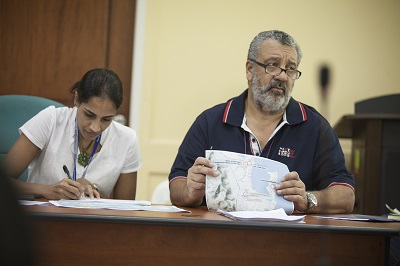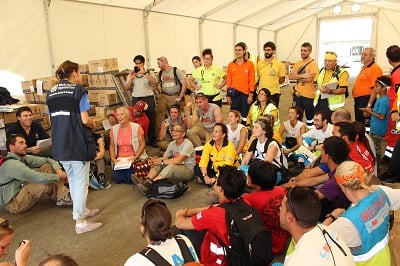
My name is Dr Sasha Peiris and I was the Foreign Medical Team coordinator during the response to Typhoon Yolanda, based in the WHO Philippine country office in Manila.
WHO Philippines and the Department of Health were preparing for the aftermath of Typhoon Yolanda even before it hit the Philippines on November 8. The projected size and scale of the natural disaster meant a high volume of foreign medical teams (FMTs) would come to the Philippines to help with the response. The Department of Health therefore asked the WHO country office to coordinate and facilitate the deployment of FMTs at the national level.
As soon as the typhoon hit, you could see just why the coordination was so important. The first health cluster meeting for all those involved in the health response was held on the second day after the typhoon. I met the German ISAR (International Search and Rescue) team at this meeting and they were literally camping out on the airport tarmac in Manila ready to be deployed. They did get out to the affected regions and start work soon after, but as we worked on the response, trying to ensure each of the FMTs reached the most affected areas in the quickest time possible was challenging. Roads, telecommunications and buildings were destroyed meaning transport and coordination was difficult.
WHO sent staff to the affected areas to coordinate the response so that we could make sure the FMTs were sent to the places that really needed them as quickly as possible. We mapped the typhoon affected areas to better visualize where health care was needed most, the type of services that were required and to match the capacity and capability of the teams with the needs on the ground. We also mapped services such as where people could get treated for TB and tracking of TB patients to get them back on their medications. In all it was a huge operation!
Overall 151 FMTs were deployed in response to Typhoon Yolanda and the WHO helped coordinate a further 5000 tons of health equipment and first aid materials. There was type 1 medical teams providing primary health care, type 2 surgical teams and type 3 teams providing surgical-specialized care, including a 300 bed 10,000 ton hospital ship sent by the Chinese government.
It truly was amazing and touching to see the support from all corners of the world. We received calls and emails from foreign governments and embassies offering their medical teams, field hospitals, medical supplies and or monetary donations. We also received messages from individuals offering their money and time as volunteers and we even received calls from a couple of school children based in USA offering their money. The overall response from the international community was truly an example of global solidarity and we really felt that throughout the response.
To date, more than 100,000 consultations and 5,000 surgeries have been performed by the FMTs. Now many of those teams have returned home and the local health services are getting back up and running. Thanks to the support of FMTs and all those who came from abroad, the communities that were most affected by Typhoon Yolanda were able to access at least some basic health care services. Now the work of the longer term rebuilding and strengthening of the health system is under way supported by foreign donors and international organizations including the WHO.

